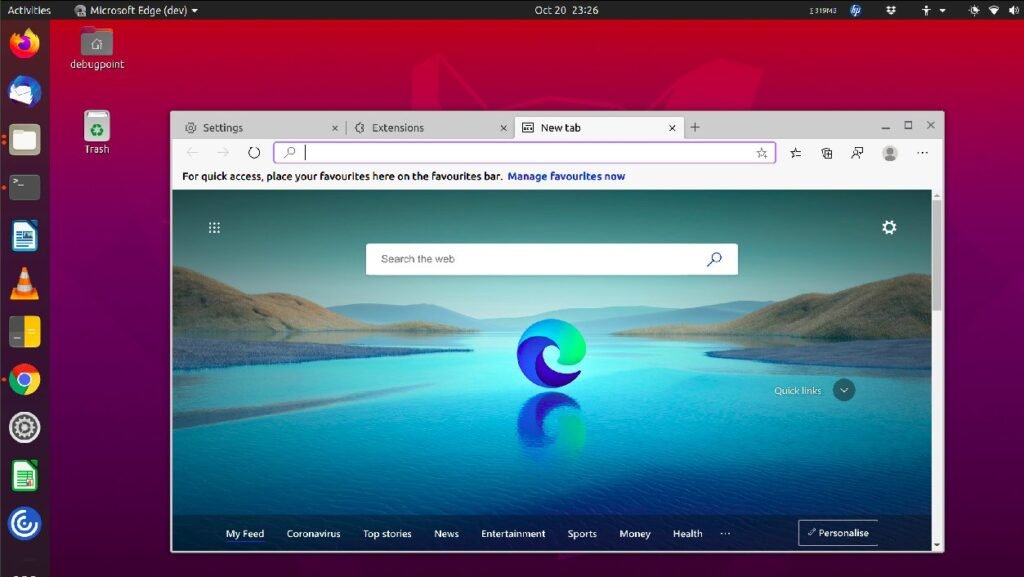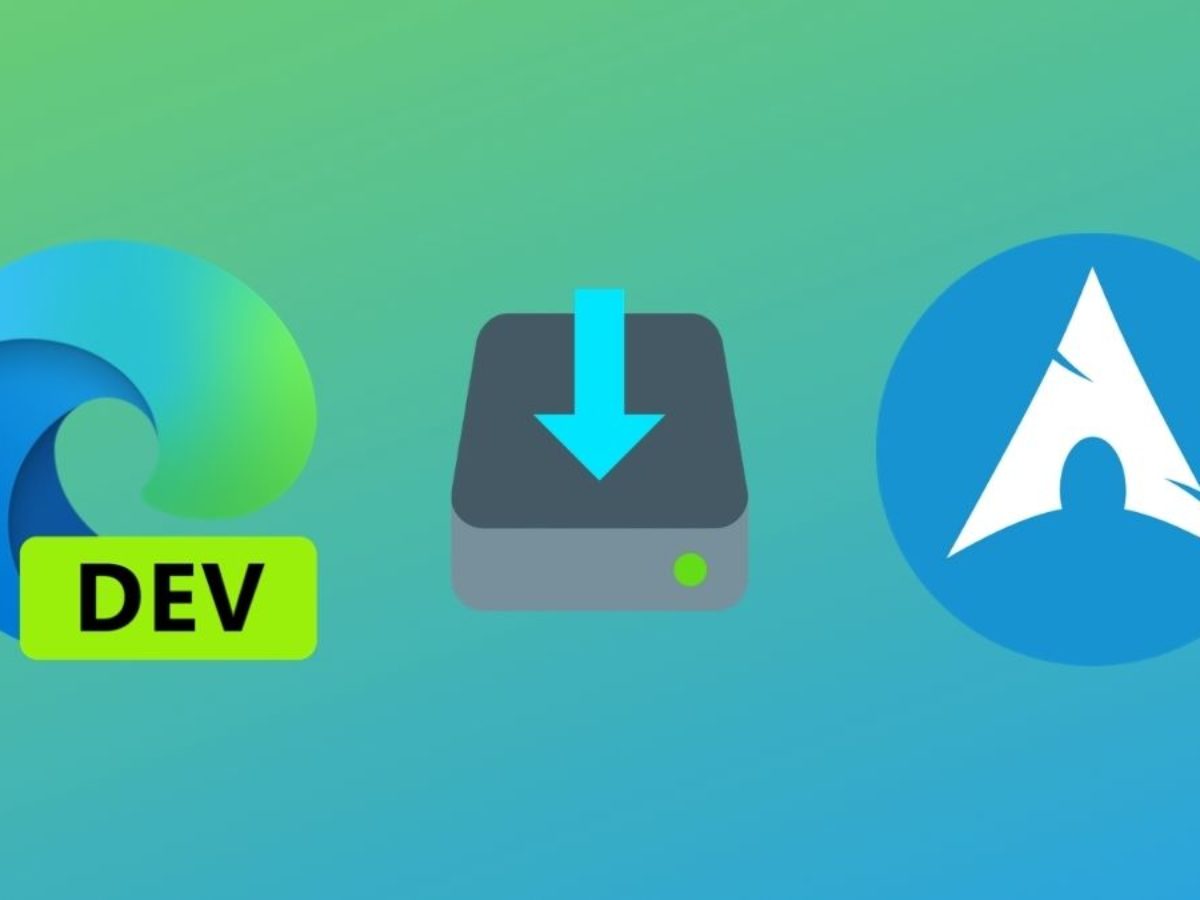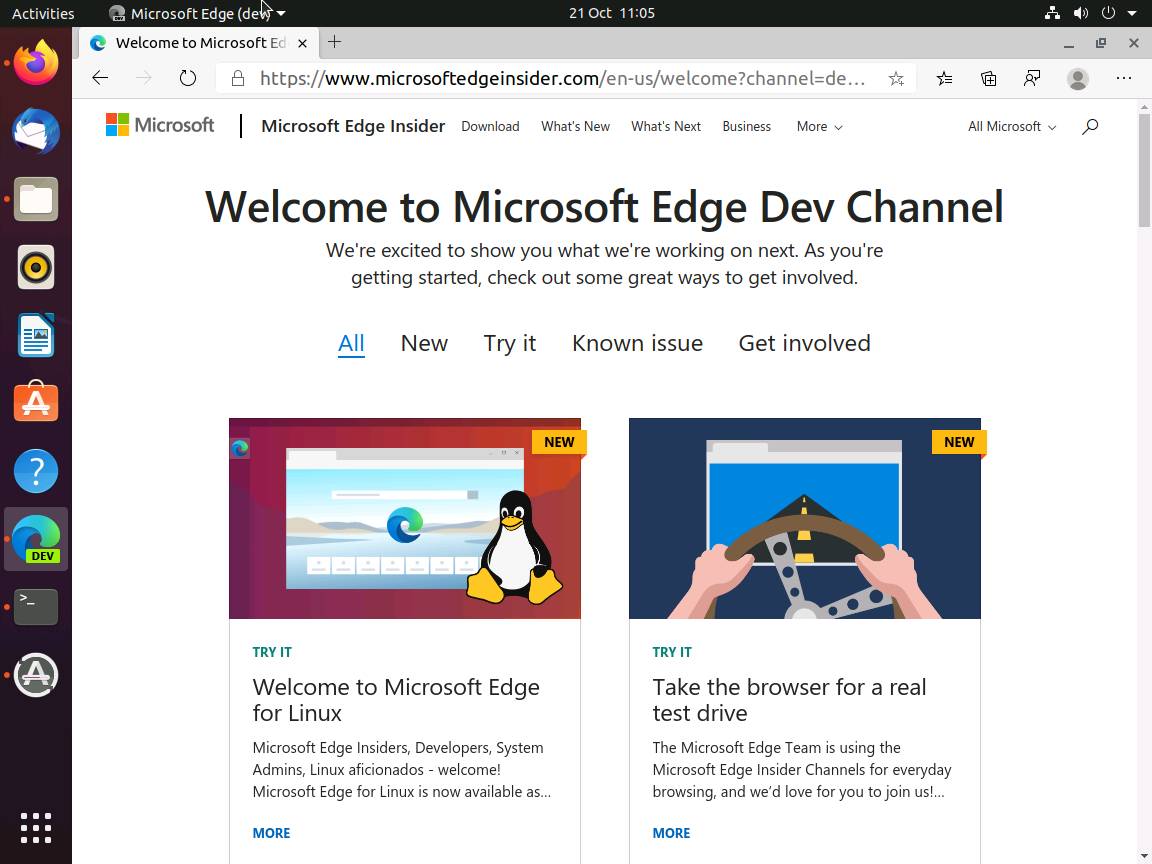Edge Chromium Linux
Feb 03, 2021 Edge allows you to synchronize your bookmarks, history, and passwords on all your devices. Edge is based on Chromium, the same open-source project used by Google Chrome browser, and it is compatible with the Chrome extensions. This article explains how to install the Microsoft Edge Browser web browser on Ubuntu 20.04.
- Microsoft stopped releasing security patches for Edge Legacy from March 9, 2021, and released a security update on April 13, 2021, which replaced Edge Legacy with Chromium-based Edge. Microsoft released the Chromium-based Edge to the Xbox Insider Alpha Skip Ahead group on March 6, 2021.
- Installation and Use Rights.For installation and use of the Software on any non-Windows platform, including but not limited to macOS and Linux, you may install and use one copy of the Software on any device running such non-Windows platform.
Microsoft Edge for Linux is now a thing, so in this post we show you how to install the browser on Ubuntu, Linux Mint, and any related Linux distributions.

In guide we show you how to install Microsoft Edge on Ubuntu (or any Ubuntu-based Linux distribution, like Linux Mint) in two ways: graphical (GUI) method, and command line (CLI) method.
Edge Chromium Linux
It doesn’t matter which method you choose as you will download and install the exact same version of Microsoft’s new-fangled browser. Plus, both methods set things up so that you get future updates as and when they’re released, automatically.
Microsoft Edge is based on Chromium, the open-source browser engine developed (though not exclusively) by Google. Any website, web app, or web service that works in any Chromium-based browser, such as Google Chrome, will work in Edge too.
Even better: you can install Chrome extensions in Edge too (though Microsoft maintains its own extension hub for browser add-ons).
Read our hands on with Edge for Linux development builds for a broader overview on what works, what doesn’t, and what you should keep in mind if you plan to use it otherwise.
How to Install Edge Browser on Ubuntu
Keep in mind that Microsoft Edge for Linux is in developer preview. It is not “stable”. It is not even a beta. Some features (like browser sync) are currently unsupported on Linux. Are there bugs? Yup. Will it crash? Quite possibly!
Please note: this article is about how to install Edge on Ubuntu, not why you should install it. You decide which software you use on your system. And if you don’t want Edge? That’s fine! But you probably won’t be reading a “how to” guide on the topic!
Graphical/GUI way
Installing Edge using a graphical user interface is easy as Microsoft provide official installer packages for Ubuntu and Fedora-based distros. You can use these builds to install the browser on your system using your distribution’s package manager.
1.Go to Microsoft Edge Download Page
In a web browser open the official Microsoft Edge download page. There you’ll find two builds for Linux. Chose the ‘Linux (.deb)’ option for Ubuntu.
2. Download Edge for Linux

Choose to save the .deb package to your Downloads folder (or any other. directory you can access easily). If you’re using Firefox you can check the “Save File” option to do this.
3. Double click on the installer
Let the download complete then use your file manager to find the Edge Linux installer. Finally, double-click on the saved file to start installing and follow the on-screen prompts.
When you install using the official installer the Microsoft Edge repository is added to your system’s list of software sources. You can upgrade to new versions of the browser as they’re released using the regular Software Updater tool.
4. Open Microsoft Edge.
Let the install finish up then open the browser from the Applications grid (or whatever app menu, launcher, etc you use on your system.
Terminal/CLI way

Prefer to install software from the command line? We got you covered. Just copy/paste the following commands in to your terminal emulator of choice.
First: the set-up script. This adds the Microsoft Edge repo to your system, and imports the Microsoft GPG key to authenticate packages (so that you can be sure they are what they say they are):
Second step: run this command to actually install Microsoft Edge:

Once done, launch the browser from your favourite app launcher, or run microsoft-edge-dev from a command prompt.
How to Uninstall Edge
So you installed Edge. Grand. And you try it out. Awesome. But what happens if you want to remove it? Well, it’s easy to uninstall Microsoft Edge using the command line.
Just open a new Terminal window and run:
Alternatively you can open the Ubuntu Software app, search for ‘edge’ by name, click the result, and hit the ‘remove’ button.
Simple!
Summary
That’s it; you learned how to install Microsoft Edge browser on Ubuntu, Linux Mint, and other distributions in this article. All that’s left for you to do now is to open the browser up and start surfing the web!
It remains to be seen if Edge will find a big enough audience on Linux to sustain itself. The browser is up against stiff competition from the likes of Google Chrome, Mozilla Firefox, and Vivaldi.
While most Linux users will shudder at the thought of using it, I think it’s great to have the choice of using Edge on Linux.
Join Transform 2021 this July 12-16. Register for the AI event of the year.
Edge is finally coming to Linux. At Ignite 2020 today, Microsoft announced that Edge for Linux will be available in the Dev preview channel starting in October. Linux users will be able to download the preview from the Microsoft Edge Insider website or from their native Linux package manager. Microsoft will start with the Ubuntu and Debian distributions, with support for Fedora and openSUSE coming afterwards.

Microsoft launched Chromium Edge for Windows 7, Windows 8, Windows 10, and macOS in January 2020. The browser has since been installed on “hundreds of millions of devices and climbing,” a Microsoft spokesperson told VentureBeat, and is now the second most popular desktop browser, after Chrome, according to Net Applications.
Microsoft wants Edge to be “the browser for business.” Bringing Edge to Linux isn’t so much an attempt to grow market share as it is a way to give businesses the option of rolling out a single browser to all their employee’s devices. “We are thrilled with customer interest we’ve received since we first announced our intention to bring Edge to Linux,” Edge program manager Kyle Pflug told VentureBeat. “We’ve heard feedback from business customers that they want one browser solution to deploy to their organization regardless of platform, and we’re excited to bring an offering to those that need a solution for Linux.”
Also available today, IT professionals can now roll back to a previous version of Chromium Edge. Microsoft said it is offering this feature because sometimes new versions break things, and in remote work environments, “any break is magnified.” With so many more employees working remotely nowadays, the company wants to give IT Pros a way to quickly “minimize interruption and address the issue.”
Going after developers
Microsoft specifically wants to ensure enterprise developers can get Edge for Linux. The primary goal is to reduce testing costs for businesses that want their websites to work on Edge.
“Linux stands out in that, while it has a relatively small desktop population in terms of what you might call typical consumer or end user, developers are often overrepresented in that population, and especially in areas like test automation, or CI/CD workloads for their web apps,” Pflug told VentureBeat. “Edge on Linux is a natural part of our strategy to reduce fragmentation and test overhead for web developers. By providing the same rendering behavior and tools across platforms, developers can build and test sites and web apps in their preferred environment and be confident in the experience their customers will have.”
Edge Chromium Linux Download
Once Microsoft releases the first preview in October, the team plans to ship weekly builds in sync with the Dev channel on Windows and macOS. Microsoft promises developer tools, extensions, test automation, WebDriver, and Puppeteer will all work. Some end user scenarios, such as connected services like sign in and sync will not be available, as those will arrive in future previews. But everything developers care about should work — it isn’t called the Dev channel for nothing.
Because Chromium doesn’t have a Canary channel for Linux, Chromium Edge won’t have a Canary channel for Linux either. Edge for Linux will eventually get Beta and Stable channels, of course, but Microsoft would not commit to a time frame for either.
New Edge features coming soon
At Ignite 2020, Microsoft also announced a bunch of new Edge capabilities that are “coming soon.” WebView2, which is decoupled from specific versions of Windows, will be available for C/C++ and .NET by the end of 2020. Once available, any Windows app will be able to embed web content using Chromium Edge.
Chromium Edge is getting a preview of kiosk mode, also coming soon. With assigned access, it creates a locked-down and tailored browsing experience on Windows 10 for kiosks and digital signage. This is meant to replace the popular kiosk mode in Microsoft Edge Legacy, the version that is not based on Chromium and will lose support on March 9, 2021.
IT Pros also have new functionality to look forward to. They will soon be able to manage their Enterprise Mode Site list from the cloud, instead of locally hosting the XML site list.
Additionally, using Azure Active Directory profiles in Edge, App Configuration in Intune will soon let IT Pros manage only the activity in an app that is related to work, leaving the rest of the device alone. Employees will be able to log in to their work identity on a personal device, while the organization only manages that experience. IT departments get the control they want for compliance, and end users get to use the device they want without handing over the keys.
Finally, Edge will get new PDF features in October. The biggest boon for businesses is the ability to view and validate PDF digital signatures, which is useful for verifying the authenticity of documents, particularly for anything legally or financially binding. Users will also be able to add notes to PDFs and access interactive tables of content.
VentureBeat
VentureBeat's mission is to be a digital town square for technical decision-makers to gain knowledge about transformative technology and transact.Our site delivers essential information on data technologies and strategies to guide you as you lead your organizations. We invite you to become a member of our community, to access:- up-to-date information on the subjects of interest to you
- our newsletters
- gated thought-leader content and discounted access to our prized events, such as Transform 2021: Learn More
- networking features, and more
